Hotel Sav Hong Kong: Floor of Love art exhibition for charity! Pop-up design shop, Goth holiday gift guide.
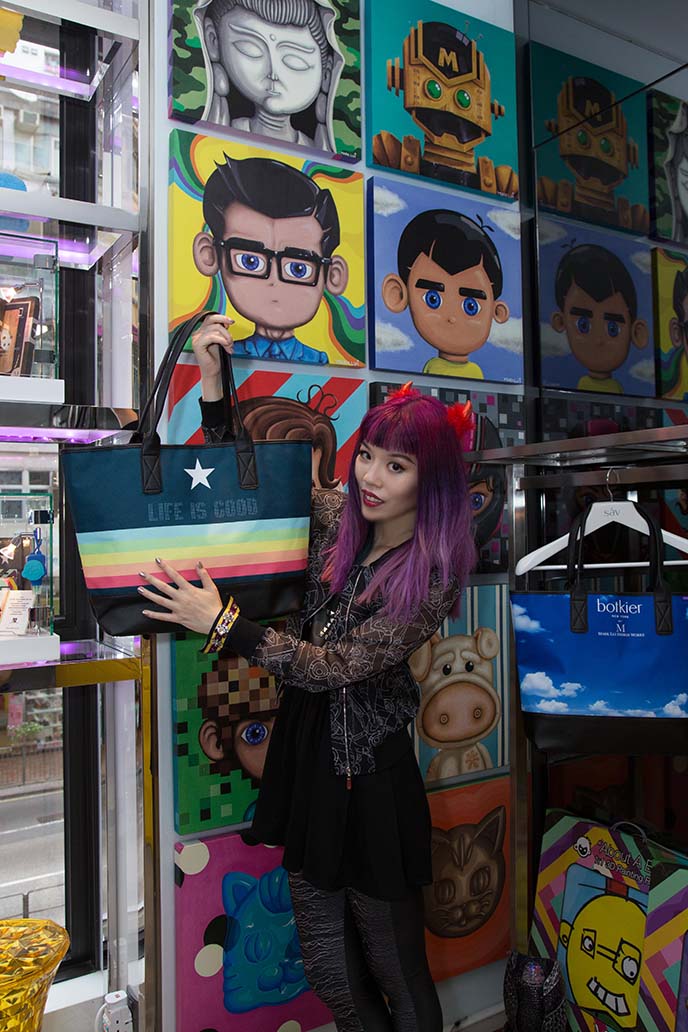
Hello from my colorful home in Hong Kong — Hotel sáv!
As you might recall from this story, I have a “La Carmina room” at this award-winning boutique hotel. Artist Naomi Rubin and I took part in their “Floor of Love” project, which dedicates the entire 22nd floor to art and charity.
I’m excited to share that the Floor of Love is officially launching in December — and hope you will stay in our room at Hotel Sav!
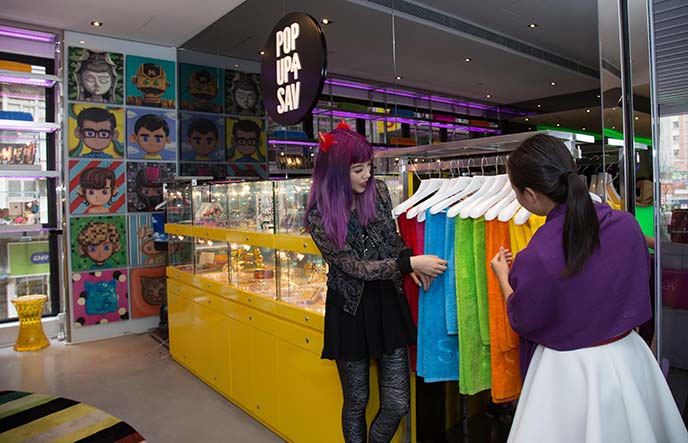
In this post, I’ll show you the new, original art that Naomi created for the opening exhibit.
I’ll also take you inside Sav’s new Pop-Up store, rainbow afternoon tea set… and end with a Gothic gift guide, highlighting holiday presents under $20.
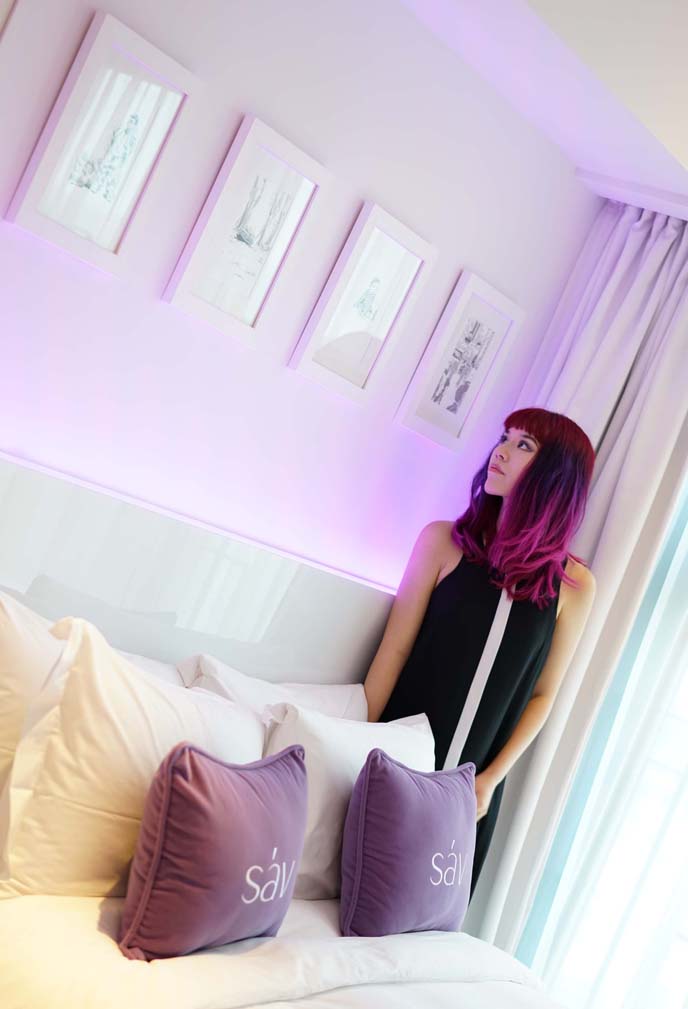
Let’s begin in my “La Carmina hotel room” at Hotel Sav. (My address: Room 2219, 83 Wuhu St, Hung Hom, Kowloon, Hong Kong)
Last February, my team and I went to support the hotel opening, and created this travel video about decorating this space to represent “Love the Dream.”

Now, Sav Hospitality is celebrating the launch with a big Floor of Love event. The Sonic Garden space will feature new works by the artists — including Naomi! — and the 19 decorated rooms will be open for viewing.
Our art will be paired with wines that match the themes (Love the Planet, Community, Dream, Memory). There will also be food tastings, a graffiti car display, and music. Best of all, you can buy the works, and proceeds will go to the Disabled Association and Make a Wish Hong Kong.
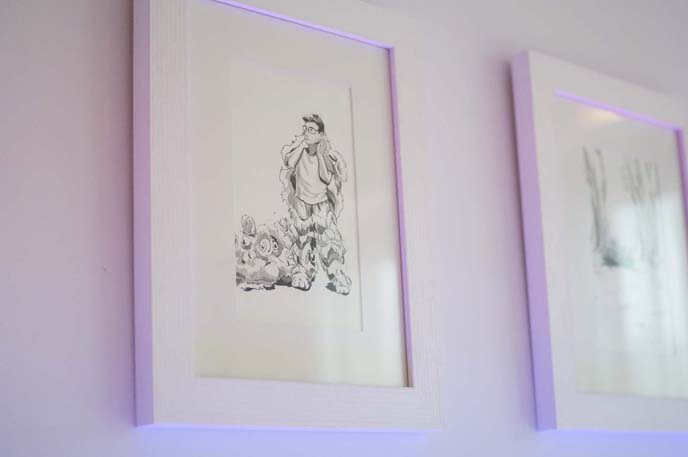
You can peek inside the various Floor of Love artist rooms in this photo diary, as well as see more of the La Carmina works (such as these sketches featuring scenes from Hong Kong).
Keep scrolling to see the three new pieces that Naomi made… they feature my Scottish Fold cat Basil, and mouth-sewing!
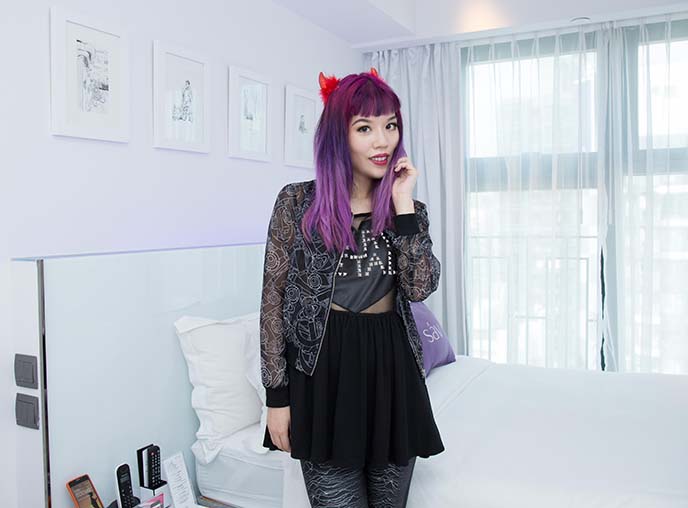
I always feel at home when I stay in my Hotel Sav room, and wind up with the most vivd, lucid dreams.
(I’m wearing a Sailor Moon jacket that I got in The One – Tsim Sha Tshi mall. This fashion collection features clothes with Sailor Moon symbols and patterns. My black Very Metal dress is Gladnews, and the Unknown Pleasures tights have a Joy Division print.)
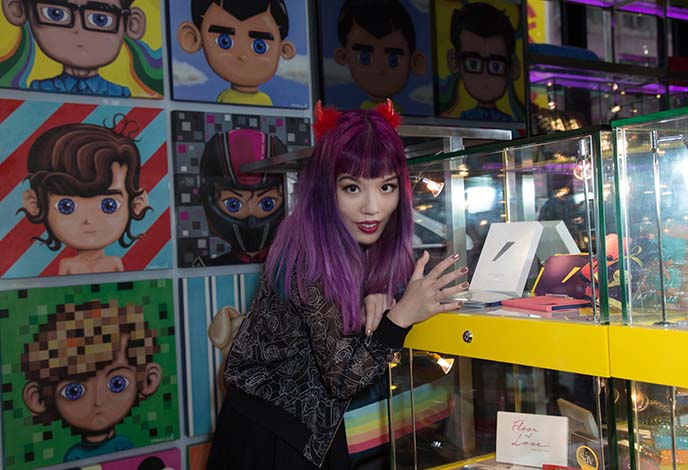
On the first floor lobby, anyone can shop the “Pop Up At SAV” — a collection of local designs that celebrate art and lifestyle.
This space has an eye-catching selection of jewelry, purses, watches and more. There’s a rainbow rack of sáv Beach Wear, and all types of stationery branded by the hotel.
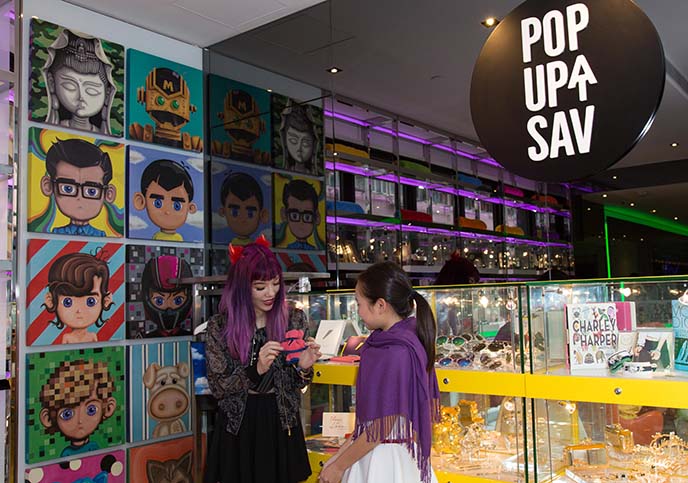
I’m wearing a Korean bracelet and squeezing a “towel bear,” which I’ll give to my baby niece as a present.
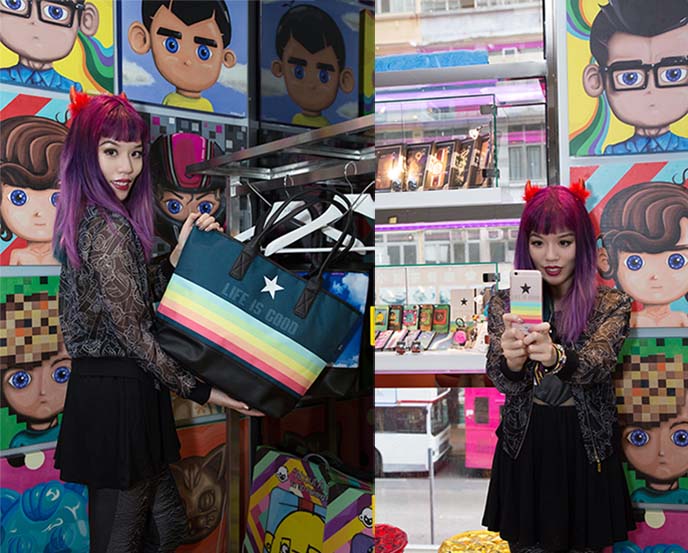
The wall of paintings is by local artist Mark Lui. You can shop for his Design Works cell phone cases, which come in carved wood and rainbow prints. I’m carrying one of Mark Lui’s Botkier tote bags, which are among the most popular items.
I hope you’ll stop by the Pop Up at Sav, to check out these artistic goods!
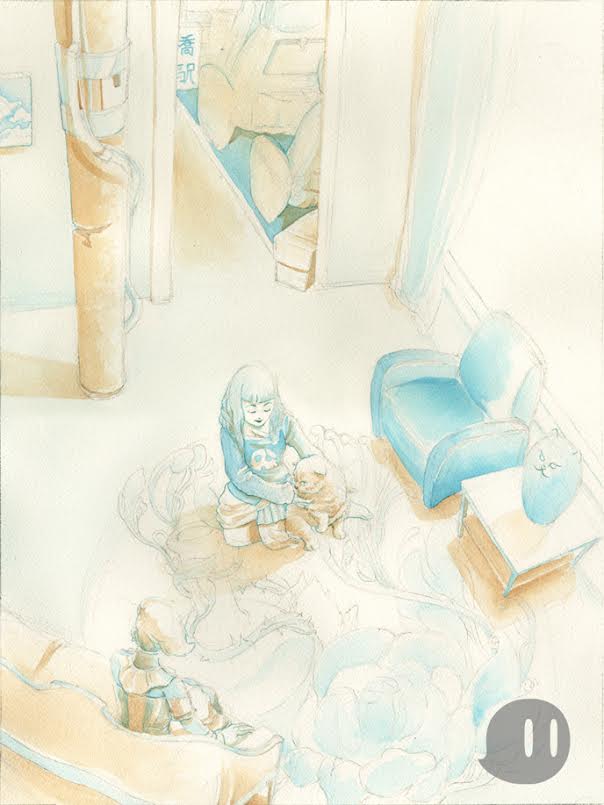
And now, let me share with you the three pieces Naomi Rubin made for the Floor of Love opening party. Below are her titles and “a short bit of story that takes the viewer a little closer to the memories she drew from when painting.” Let’s start with two inspired by Basil Farrow the Scottish Fold cat!
Family
2015
Pencil and acrylic on paper
“It’s a rare joy when you get to meet the family of someone close and feel the realization that you already know them. Then, you can draw them some more.”
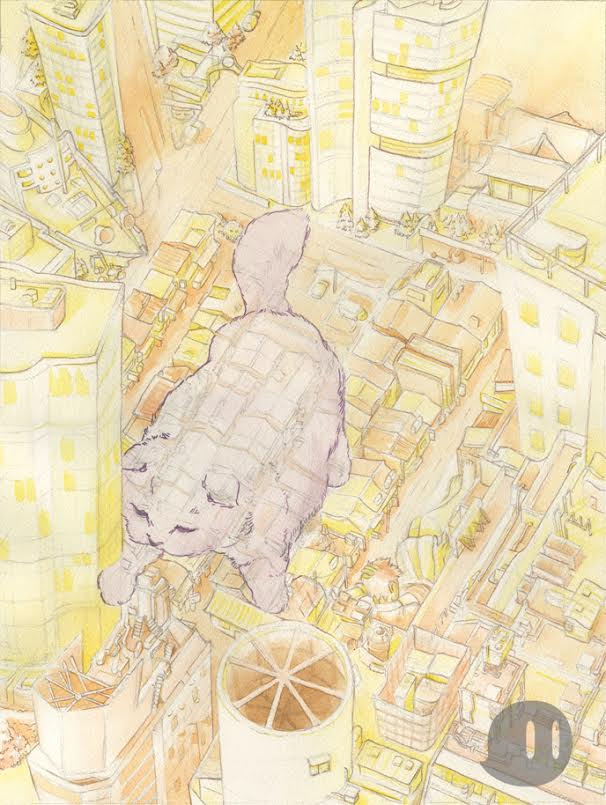
Back-Alley Photography
2015
Pencil and acrylic on paper
“The first time we shot photos on that trip, it was on the way to meet some unlikely co-workers. We stopped in a back-alley that made for unusual lighting but fantastic poses and composition. Most of this city is real, but the parts have been taken from all over — kind of like a real city indeed.”
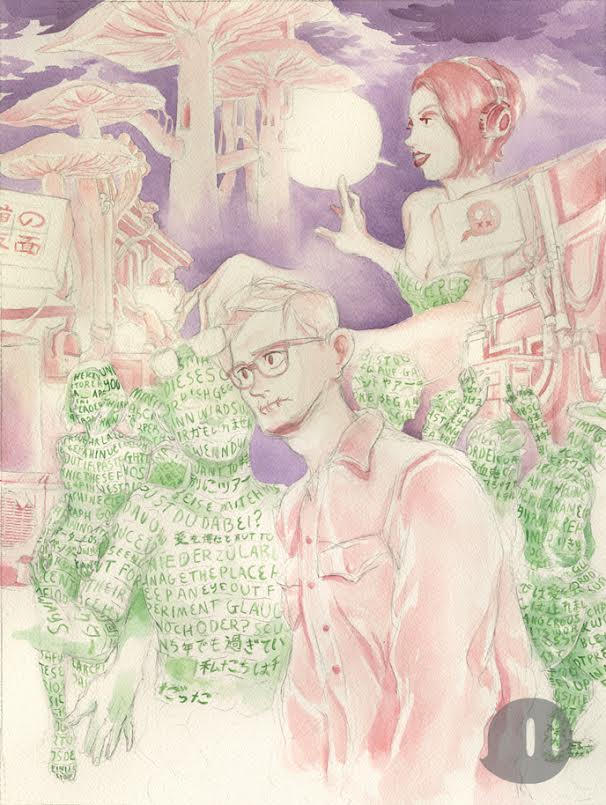
Last Minute
2015
Acrylic on paper
“The posters were made on the train ride up, and pasted guerrilla-style around town as we filmed. We checked out the venue space only the evening before, and even that changed around on us. We were ready though, because we had been practicing.” (Hint: if you’ve followed our TV-fixing work over the years, you may recognize this scene from the Joko vs Klaas lip-sewing episode!)
It’s wonderful to see how Naomi’s art continues to evolve. She is currently working on a mystery project; you can watch her Naomiyaki site for changes.
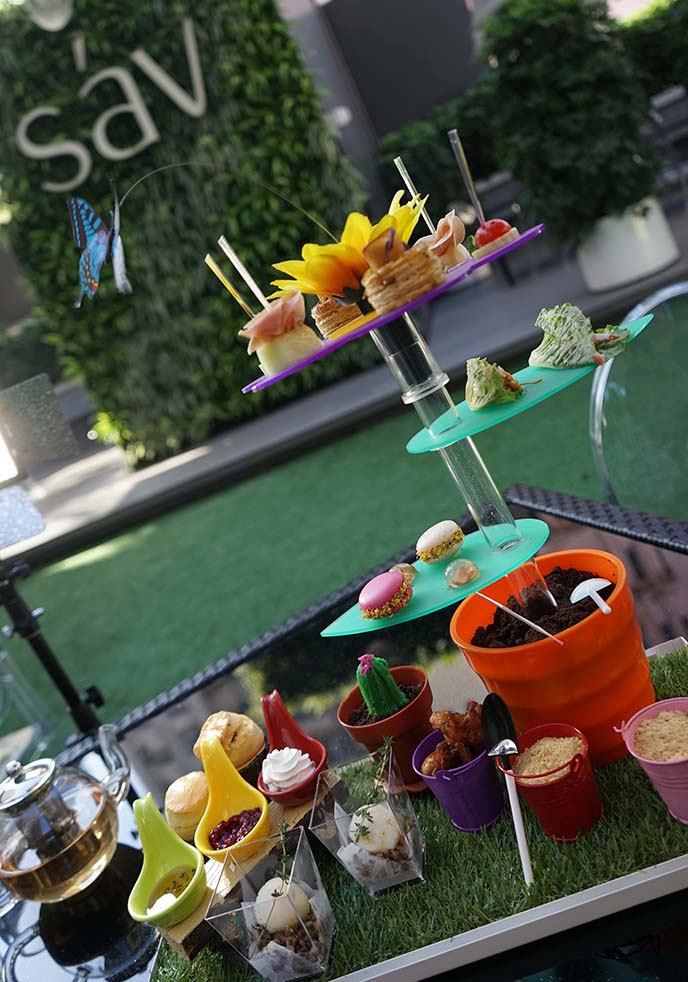
While staying with Hotel Sav, I also got to try the new “Floral with Colors” Afternoon Tea Set. It’s a rainbow delight of sweet and savory treats, decorated to look like a blossoming garden — complete with chocolate soil and a twirling butterfly.
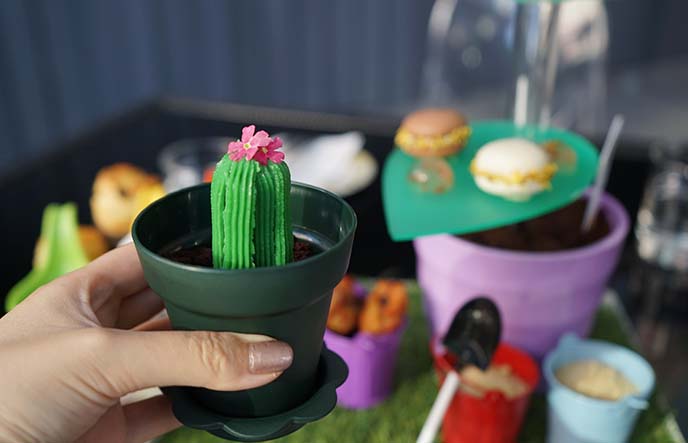
The bite-sized delights sit next to flowers by Hahahflorist. I had fun eating the mousse with a miniature garden shovel, and skewers of mozzarella with tomato and caviar.
Anyone who orders the Floral Tea Set receives a packet of flower seeds and a Casetify screen protector for free. And if you wear a floral dress or accessories to high tea, you might get a special tote bag too.
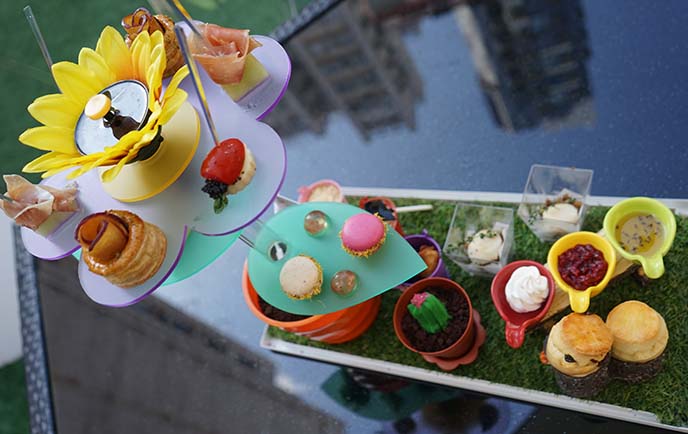
The hotel also has a new “Patisserie by sáv” on the ground floor, serving fresh cakes and pastries every day.
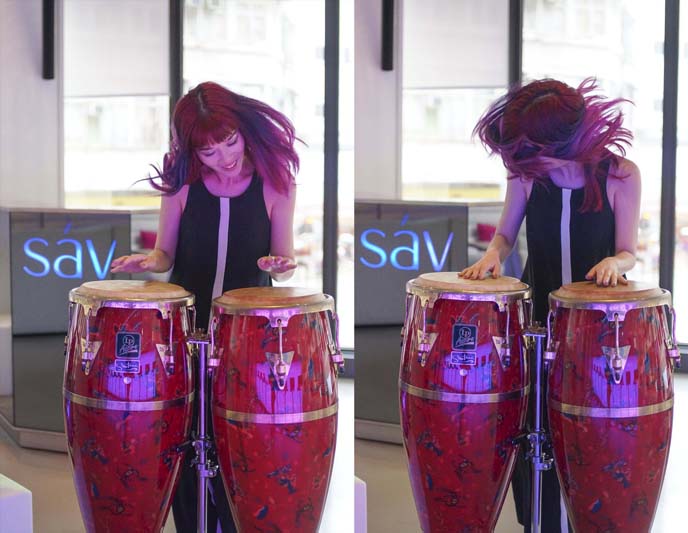
I think you can see why I love staying at Hotel Sav! It’s less than a year old, and has already racked up awards for best design, branding, marketing and more.
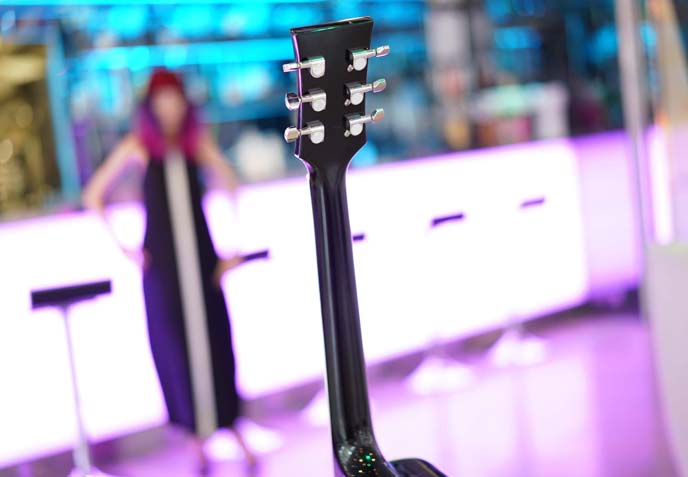
My friends and I enjoyed hanging out at Amplitude bar, which has a music theme. We snacked on fresh fruit cocktails (there’s a whole rainbow of them) and snacks such as oven baked pizza.
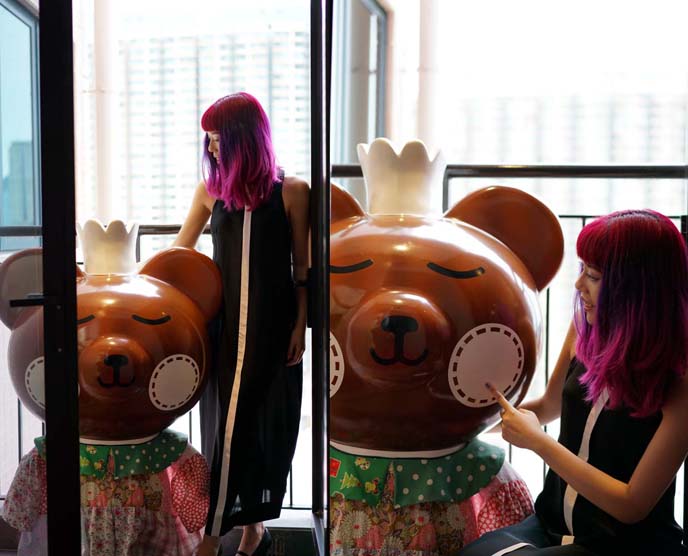
I hope you’ll stop by Hotel Sav to see the Pop Up shop, and try their Floral Afternoon Tea. And don’t forget — you can request to stay in the La Carmina room, when you travel to Hong Kong!
Above, we hope you enjoy the Hong Kong travel video we made about the hotel opening, and Chinese celebrations. (Filmed and produced by Borderless Media )

And now… my Gothic Alternative gift guide! It’s “Nightmare before Christmas” time, and I’m sure you’re scrambling to pick up holiday presents. It’s always a challenge to find something unique and useful, especially for someone of a Gothic disposition.
To help you out, I’ve rounded up my favorite Goth gifts, most of which are under $20 US. I hope you find these shopping tips helpful! 
A mobile phone case is a thoughtful present, since these tend to have high turnover (people use smartphones constantly, and eventually break the covers). These iPhone and Android cases are fun and stylish, and not too heavy. Of course, make sure you know what type of phone your friend uses so that you purchase the right model.
From left to right, my favorites (in $20 range!) are a 3D pastel goth phone case –– a must have for those into sweet kawaii. Anime fans will smile when they unwrap the Pikachu Pokemon iPhone case.
Valfre makes the niftiest soft mobile cases, including a carton of 100% boys tears, a mermaid seashell phone case, a black cat with big eyes (my favorite), and a funny giant pencil.

During the winter months, your friends will need a knit cap to keep warm — or tuque, as we Canadians call these things. Instead of a boring basic beanie, why not give them something fun?
Killstar has the most eye-catching Gothic accessories on the market. I had a hard time deciding between (from left) the aliens with upside down cross beanie, pentacle and moon winter cap with a pom pom, “So Goth I’m Dead” hat, and pyramid Killstar tuque. (These links lead to where you can directly get them.)

I’m fond of giving and receiving high-quality makeup, especially if it’s by brands that are not usually found in stores. All of these picks are under $20 too.
Anastasia is the queen of eyebrows, and makes a brow powder palette that looks very natural. The self-sharpening Anastasia eyebrow pencil is beloved by makeup addicts worldwide. (All of these come in different shades.)
Matte, long-lasting lip glosses are currently all the rage. Jeffree Star has a fabulous collection that includes shades like dark blue and purple gloss. Recently, I’ve been wearing this exact shade of Urban Decay lip gloss, and can vouch that it stays on.

If someone has recently moved to a new apartment or dorm, a home decor gift is a nice gesture. Try to avoid “Halloween party” products, and look for items made with better materials.
On the top left, I’d welcome this a set of Mercury colored glass skull bottles. They’d look great on a shelf or mantle, and can hold a fresh flower. Below these are are two versions of a cardboard 3D skull, which also comes in black and other colors. This unique skull can serve many purposes, from a paperweight to a scratching station for your cat!
A skull-shaped planter adds character to the home. In addition to plants, the vase can hold various objects such as candy or pens. Finally, this purple Day of the Dead glitter skull can hang on a door, wall, or Christmas tree.

False eyelashes are an excellent stocking stuffer, especially if you find Japanese ones with cute packaging. I love the Wicked Hippie eyelashes with rainbow accents and colors.
Dolly Wink is a favorite brand among Tokyo gyaru and Harajuku girls. The bottom right Velour Lashes are made of high quality silk fibers, and I wear them on my photoshoots.

Finally, since you never know what Santa might bring you… I’ll share my dark dream wishlist! These are the height of Gothic haute couture — designs to die for.
I’m lusting over this circular spider purse made from black velvet, with matching cobweb stiletto heels. These Majesty Black leather gloves are evil queen fabulous, with gold spiky nails.
On the right, Alexander McQueen is the king of darkness. I have my eye on McQueen’s Goth clutch purse with a knuckle grip and Swarovski crystals, and studded leather platform Oxford shoes.

And above is my Technicolor dreamcoat. This anime pink faux fur coat by A.W.A.K.E is kawaii done right! It’s available here, in case one of you feels the urge to pick it up for me… anyone? Anyone?
I hope you found my Goth / alt gift suggestions to be helpful, as you shop for friends and family this Christmas season. Have fun, and let me know if you have other suggestions for presents.
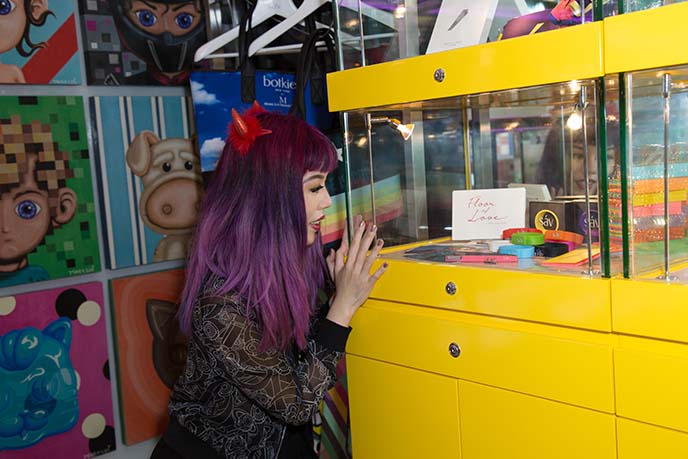
How do you like my art / charity collaborations with Hong Kong’s Hotel Sav? You can find out more, and book my La Carmina room, on their website and Facebook.
SHARE & COMMENT
Hong Kong’s natural, healthy pet food retailer: Pet Sensei! Cat & dog supplies with a cause.
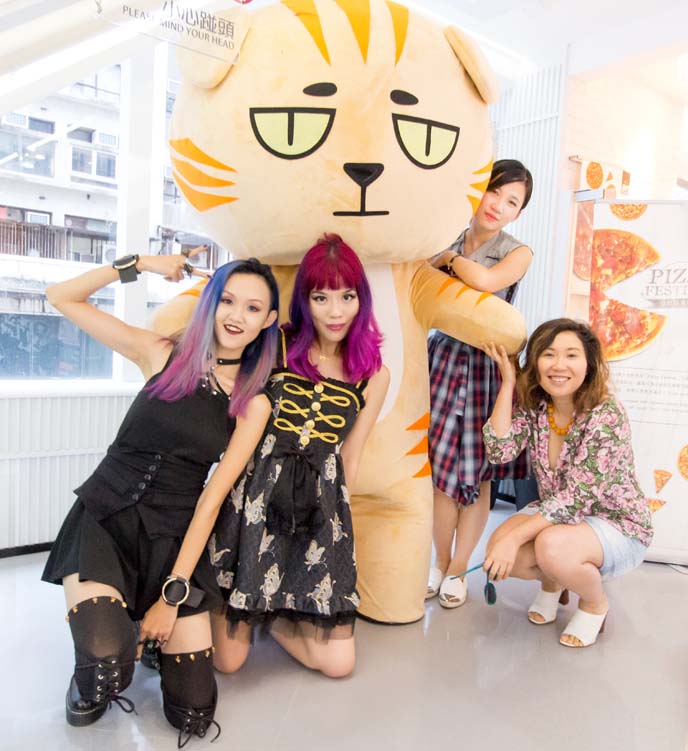
Animal-lovers, you will love this story. Above, as you can see… my Scottish Fold cat has become a life-size mascot!
We’re thrilled to support a new Hong Kong pets service — Pet Sensei. This online store sells healthy products for dogs and cats, and supports animal charities.
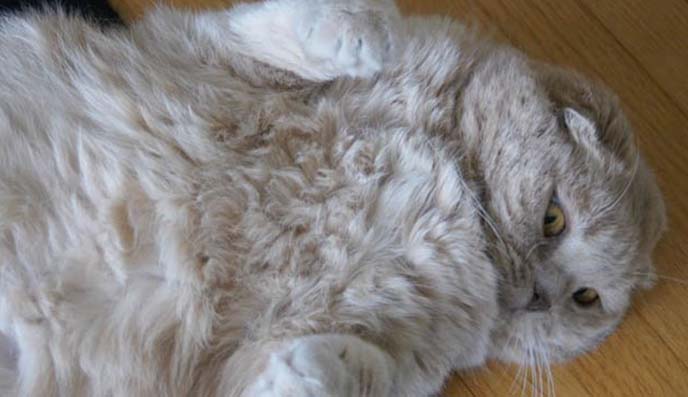
Basil gladly “lent a paw” to the company, knowing that they only sell the best brands of food, litter and more — at affordable prices. Plus, Pet Sensei donates funds from every item sold to animals in need.
(Read on for more, as well as a Chinese Gothic Lolita modeling shoot!)
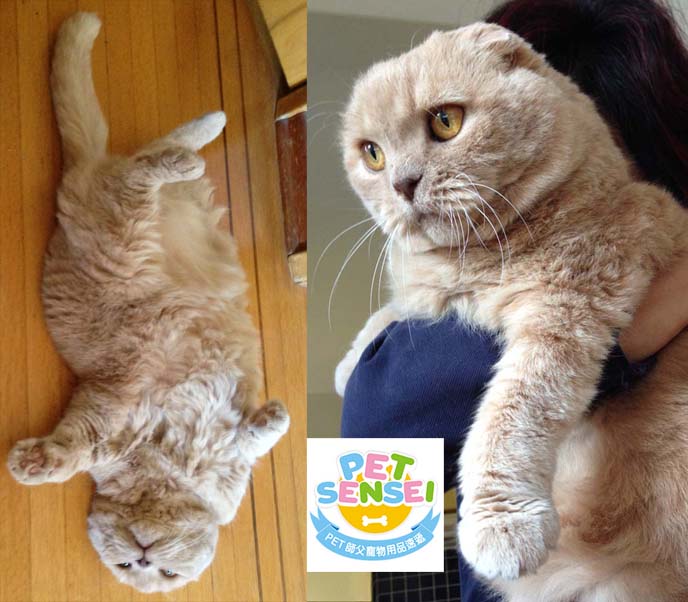
These days, having a pet is like having a family member. We want to provide our furry friends with the best possible food and care. (What a baby — Basil Farrow loves to be carried!)
However, in China and Hong Kong, it’s expensive and difficult to purchase high-quality pet food. Respected international labels (such as Orijen and Wellness) aren’t found in most local pet stores, and online prices are astronomical. Locals told me they feel stuck and frustrated by the situation.
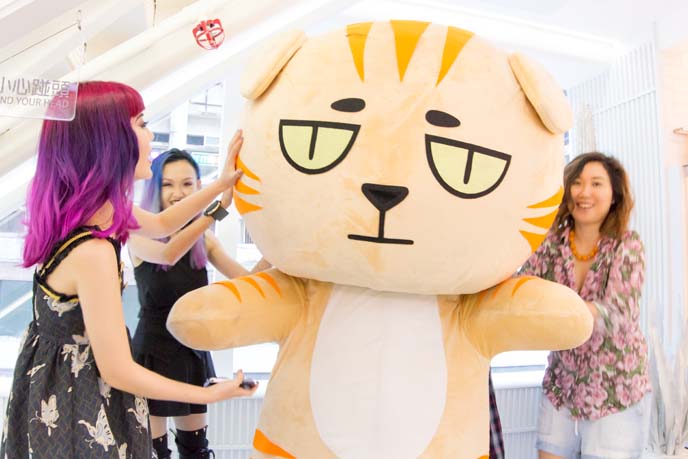
Basil to the rescue! My plump cat is the face of Pet Sensei, a site that makes these top-quality products easily available in Hong Kong. The company imports pet foods and supplies directly, and sell them at lower prices than other sources. They’ll also deliver right to you.

Pet Sensei has created an entire community around their mission of helping animals. On their Facebook page (Pet 師父), you can share cute stories about your pets, learn about animal care, and play games to win prizes.
In Hong Kong, it’s hard to find pet foods without by-products and potentially toxic ingredients. Pet Sensei, on the other hand, sells top-rated international brands including Orijen, Wellness, Oven Baked, Natural Balance, Artemis.

The staff illustrator does a fantastic job at turning Basil (the maoo) and Tiny (the dog) into cartoon characters. Above is a comic from Halloween — you can see the latest ones on the Petsshk Facebook page.

In addition to donating funds to charities, the staff of Pet Sensei takes direct action to help animals in need.
Recently, they rescued Pi — a dog who was constantly being mistreated, underfed, and thrown into the sea. When the owner found out Pi had cancer and needed urgent surgery, he abandoned him. Pet Sensei stepped in and paid for the surgery. They are giving updates on the Facebook page: “Pi is now recovering slowly. We will continue to fund the clinic expenses until we can find someone who can take good care of him and love him for the last stage of his life.”
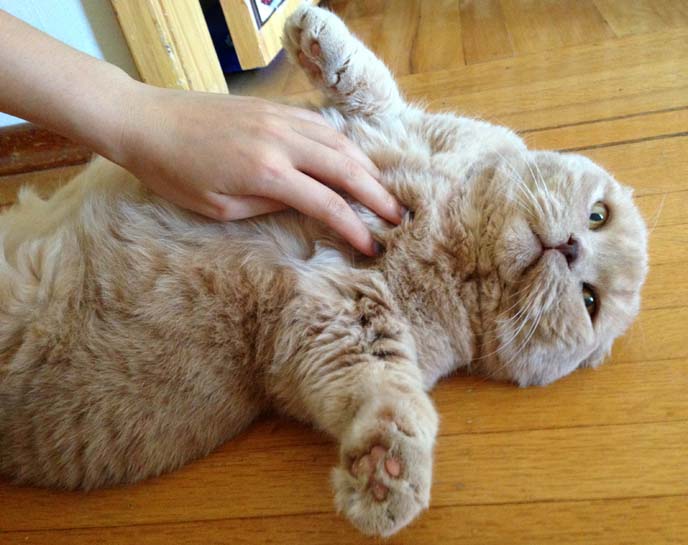
Not all pets are as lucky as Basil… That’s why we wanted to lend our support to Pet Sensei and their animal rescue work.
We hope Hong Kong pet owners can feel great about buying quality goods from a company that cherishes animals, and helps them speak out.

And to top it off — the prices are pretty fabulous. Right now, they are holding a week-long Pet Carnival that is offering discounts, lucky draws, games and more fun.
The site is available in both Chinese and English. Customer service is very responsive and fluent in English, so if you’re an ex-pat in Hong Kong, you won’t have any trouble ordering from them.

I hope you’ll check out Pet Sensei — and please tell your Hong Kong friends who have pets! Basil sends a snuggle in return.
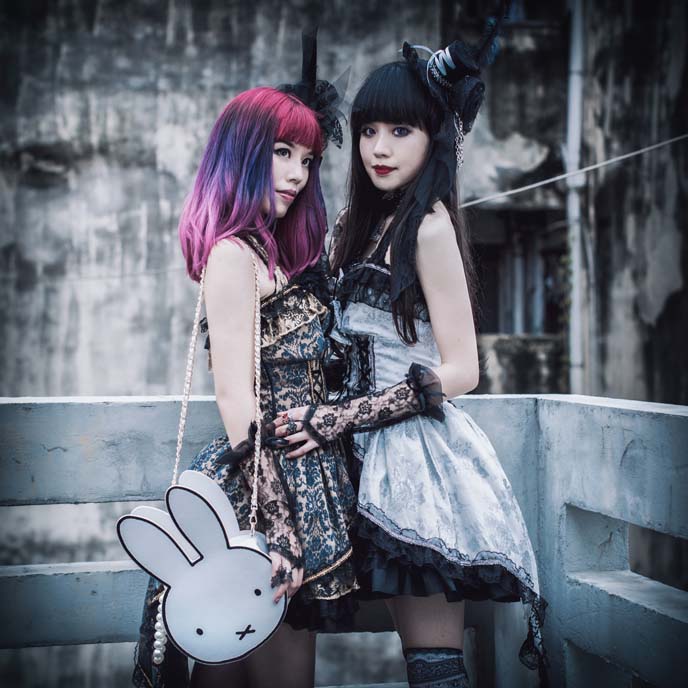
What else have I been up to in Hong Kong?
I recently did a photoshoot with my friends. Above, I’m modeling with Natalie Lam, designer of the local Gothic Lolita brand Spider. These enigmatic photos are by Thomas Sandfield, who shoots fashion editorials and music videos in Hong Kong and worldwide.
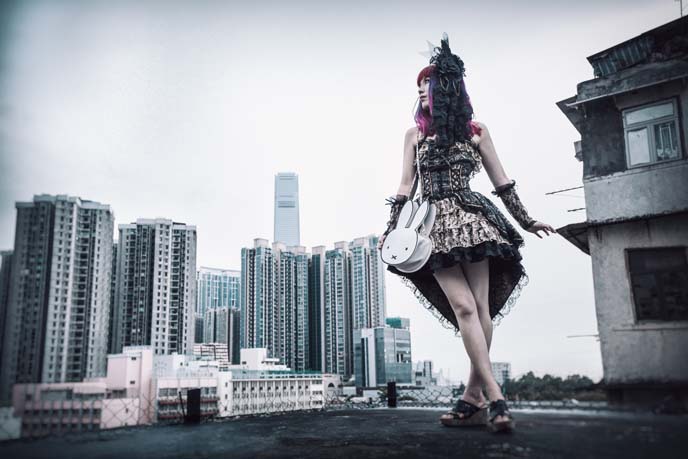
We snuck up onto a rooftop to shoot these images. Thomas has a magnificent eye for capturing the mood of the city.
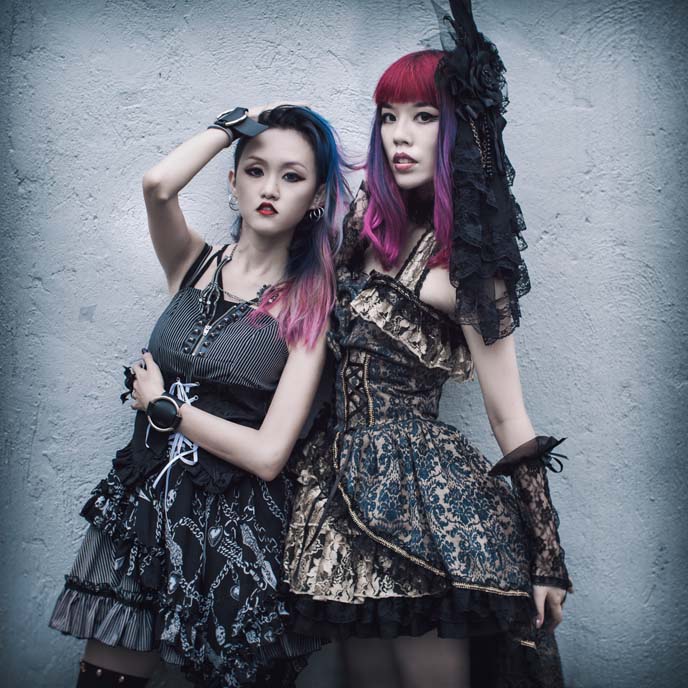
Above, I’m with my rainbow-haired friend — Mim Lai Sandfield of Sandfield Productions, a talented illustrator who also edited these photos. We’re all wearing Spider Gothic & Lolita fashion.

K. Lau of Bright Production took part in the shoot too (we met in Cebu, Philippines). He captured the above portrait of me, and the behind-the-scenes below.
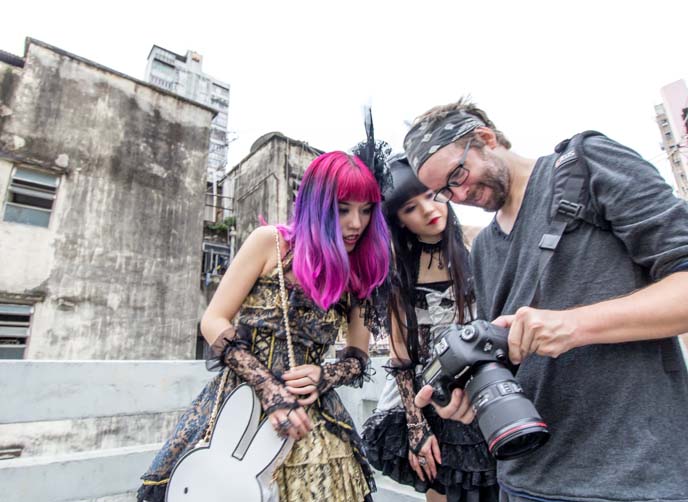
Natalie and I look pleased with the shots Thomas took!
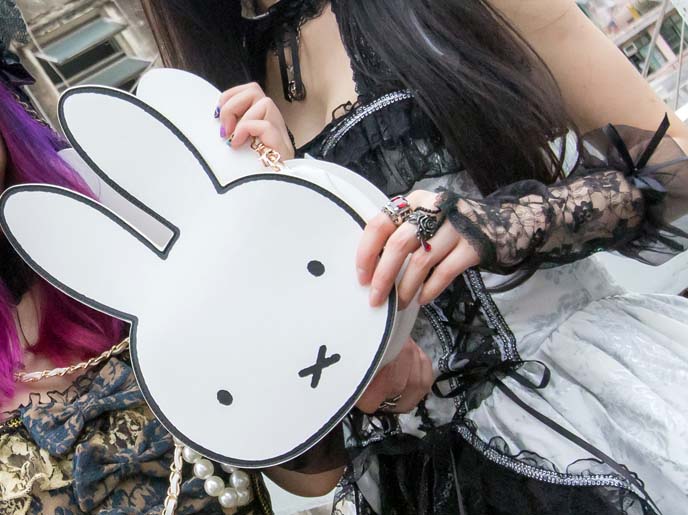
We are obsessed with Miffy the X-mouthed bunny. I got this purse from the Miffy store in Shanghai (there are branches in Hong Kong too).
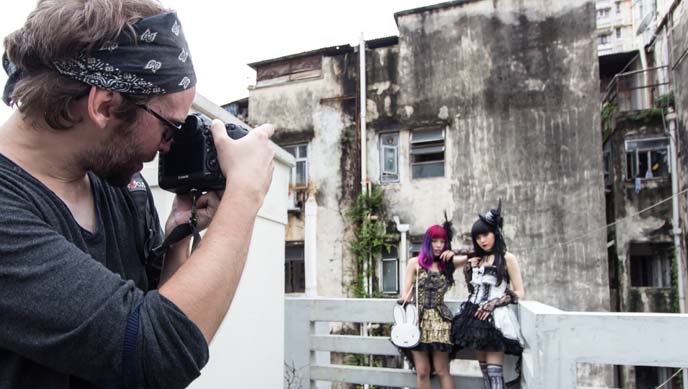
Hong Kong’s gritty buildings formed the perfect backdrop for a squad of Goths.
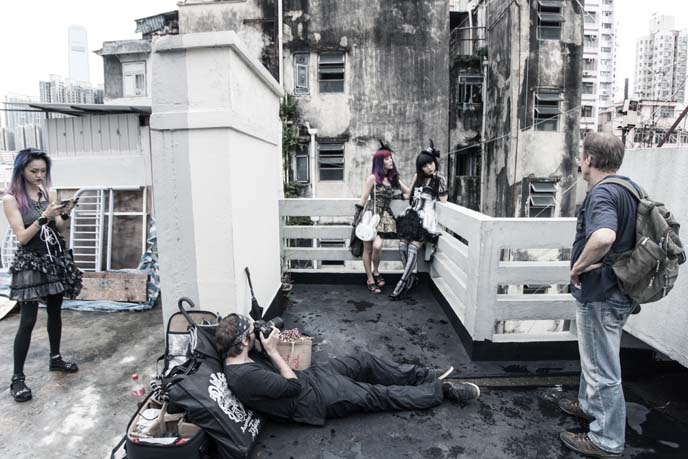
A peek at what goes on behind the lens. Thanks also to photographer Arthur Rash (far right) who joined our adventure.
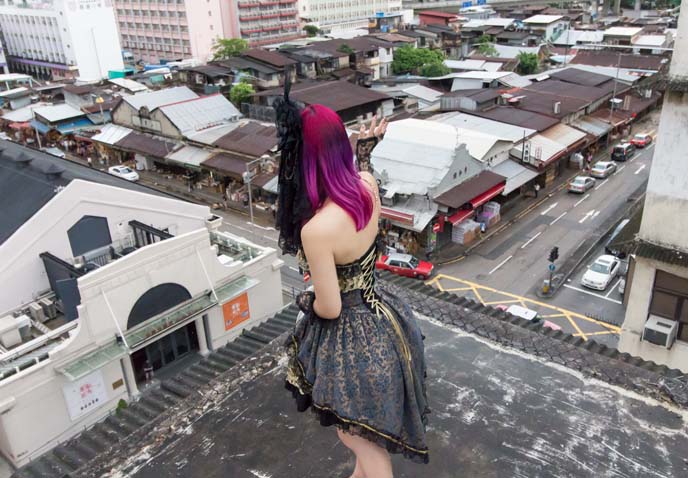
Good thing I’m not afraid of heights… as we were up high on the roof, without a barrier!
Thanks to my Hong Kong friends for the fun shoot.

Finally, on the topic of Gothic fashion… thought I’d give you a head’s up. Shopbop is having a big sale here until Nov 30 — a great time to pick up winter items, or presents for friends. I’m personally loving this silk kimono robe, top with collar and bow, and fuzzy black gloves.
What do you think of my Scottish Fold being a pet mascot? Enjoy more cat cuteness on the Pet Sensei site.
 LA CARMINA
LA CARMINA






